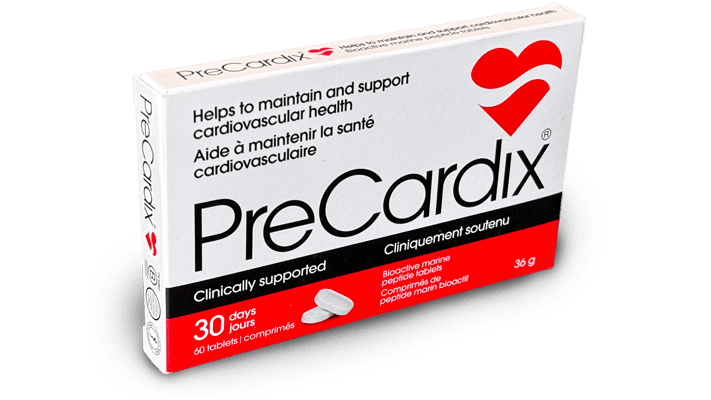How breath and mindfulness can help you achieve healthy blood pressure goals
Blood Pressure Reduction and Cardiovascular Outcomes | Lifestyle Interventions for Blood Pressure | Meditation and Blood Pressure
Stress is a known contributor to multiple chronic diseases, including cardiovascular disease and hypertension. Hypertension Canada lists stress as a cause of hypertension and managing stress as an essential lifestyle change to help control hypertension. How can you manage stress? Mindfulness. Mindfulness is more than just a buzzword; it’s a simple practice that has a scientifically proven impact on blood pressure and heart health.
Benefits of Mindfulness on Blood Pressure
Mindfulness-based stress reduction (MBSR) refers to a host of meditation and stress-management techniques, including mindfulness skills, such as meditation and yoga, to improve physical and emotional well-being1. There has been an influx of research on how MBSR impacts blood pressure, with overwhelming support for its benefit.
A 2021 meta-analysis looked at the data on mindfulness and its impact on blood pressure from studies over the past 30 years2. Their main conclusion was that MBSR significantly lowers blood pressure compared to controls, which included patients already on anti-hypertensive medication2. Compared to controls, MBSR exerts a more significant and long-term effect on diastolic blood pressure (DBP), which rises with age and is often harder to reduce than systolic blood pressure (SBP)2. Across the studies included, the average reduction in DBP was 2 mmHg, and the average decrease in SBP was 4 mmHg2.
An earlier meta-analysis found mindful techniques to have an even more significant effect on blood pressure, reducing SBP of 5 mmHg and DBP of 4.3 mmHg3. Interestingly, greater reductions in SBP were found in patients who were already on anti-hypertensive medication2. Mindfulness techniques could be a safe and effective addition for those not achieving adequate blood pressure control with medication alone.
Mindful Impact
Mindful techniques result in an average reduction in SBP of 4-5 mmHg and DBP of 2-4.4 mmHg2,3. We know that even a 1-2 mmHg reduction in diastolic or systolic blood pressure can lead to a reduced incidence of heart failure, coronary heart disease, and stroke4. Research has found that a 5 mmHg reduction in SBP results in a;
- 14% reduction in heart failure5
- 13% reduction in stroke5
- 7% reduction in ischaemic heart disease5
- 5% reduction in mortality due to cardiovascular disease5
Small amounts of mindfulness can have a significant impact on your long-term health and cardiovascular risk factors.
Beyond Blood Pressure
The great thing about mindfulness is that it doesn’t work in isolation to reduce blood pressure; it positively impacts all aspects of wellbeing. One study looked at how incorporating mindful techniques impacts other heart-healthy habits in the study participant’s lives6. They found practicing mindful techniques resulted in increased adherence to a recommended diet, lower salt intake, reduced alcohol consumption, and increased physical activity, all of which further reduced blood pressure6.
How to Incorporate MBSR Into Your Life
Hypertension Canada recommends incorporating some form of mindfulness or relaxation technique every day to help manage stress. In most studies, mindful practices were implemented for 2 hours per week over 8 weeks, with benefits in blood pressure levels seen as early as 4 weeks2. Start with just 10 minutes each day and see how even that small amount of time can change your mood, outlook and eventually cardiovascular health.
3 Easy Ways to Incorporate Mindfulness Today
- Breathwork. Intentional breathing is the simplest and most direct way to include mindfulness in your day. A simple breathing technique like box breathing is an easy addition to your morning or nighttime routine. It takes less than two minutes and almost immediately calms your mind and body.
- Guided Meditation. The idea of meditation can feel quite overwhelming. Luckily, there are great resources like the calm app or headspace to help you get started. They guide you through meditations that can be done while walking, first thing in the morning to frame your day or just before bed to help you fall asleep.
- Yoga. If you find that you struggle to be still during mindful techniques, moving your body while incorporating mindfulness may be for you! Even 10 minutes of yoga or stretching can be beneficial to build the mind-body connection, reduce stress and eventually lower your blood pressure!
References
[1] Society of Behavioural Medicine, Women’s Heart Health Part 1: What to Know about Women and Heart Disease across the Lifespan, Allison J. Carroll, PhD; Research Associate, Department of Psychiatry and Behavioral Sciences, Northwestern University Feinberg School of Medicine. Lisette T. Jacobson, PhD, MPA, MA; Assistant Professor, Department of Population Health, University of Kansas School of Medicine – Wichita. Allison E. Gaffey, PhD; Research Associate, Department of Internal Medicine, Yale University School of Medicine
Important Information
Always consult with your healthcare provider before making changes to your blood pressure management plan. PreCardix® does not treat, cure, or prevent medical conditions. Measure and monitor blood pressure regularly. Know the signs of heart attack and stroke.
Do not take PreCardix® if you are pregnant, breastfeeding, have renal artery stenosis, have a history of angioneurotic edema, or have a shellfish allergy. Consult product guidelines for additional information. Print and share the product monograph with your healthcare provider.
PreCardix® is an innovation of Marealis Inc. a Norwegian Bio-Tech company dedicated to finding natural, sustainable, and effective marine-based solutions for blood pressure health, globally. Designed in Norway. Manufactured in North America.











